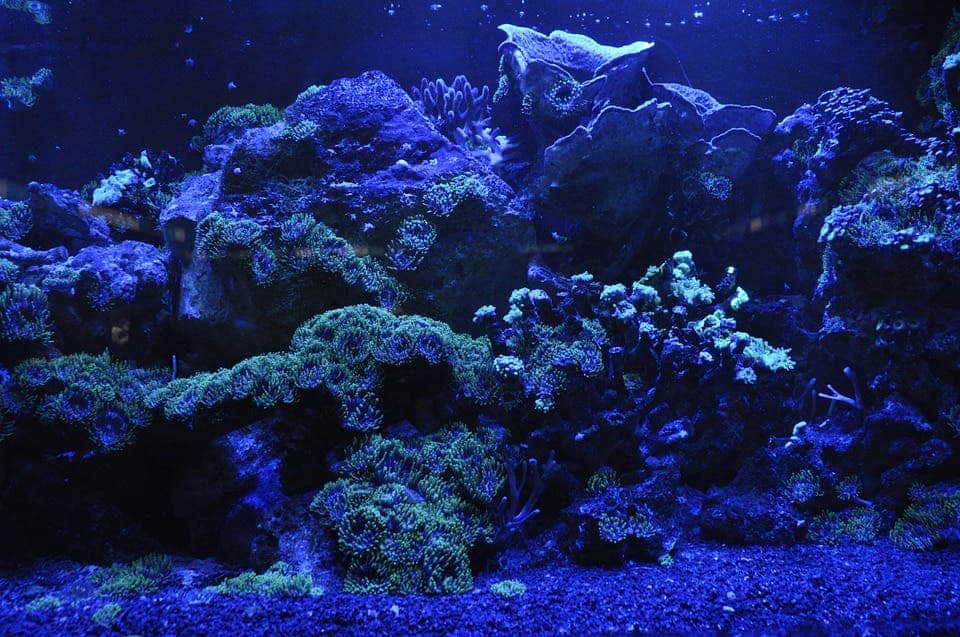Climate warming is driving corals farther from their traditional neighborhood, the tropics, in favor of more temperate regions.

The number of young corals in equatorial reefs has declined by roughly 85% over the last four decades, new research shows. At the same time, their prevalence in subtropical reefs has doubled. While this undoubtedly poses a great risk to the survival of equatorial reefs, the good news is that the shift could help conserve both corals and other species that live in reefs — all of which are being threatened by climatic shifts.
Re-reefing
“Climate change seems to be redistributing coral reefs, the same way it is shifting many other marine species,” said Nichole Price, lead author of the study and a senior research scientist at the Bigelow Laboratory for Ocean Sciences. “The clarity in this trend is stunning, but we don’t yet know whether the new reefs can support the incredible diversity of tropical systems.”
In the warmer oceans of today, subtropical areas are more comfortable for corals than equatorial ones. Drifting coral larvae are thus starting to settle in areas that never housed corals before. New coral reefs begin developing when larvae find a suitable bit of seafloor away from the reef where they originated.
However, the team believes that only certain types of coral are able to reach these new, comfortable areas, depending on how long their larvae can swim or drift on currents before running out of fat (of which they have quite a limited amount). As such, the exact makeup of these subtropical reefs is still unknown (because it’s hard, slow, and expensive to collect genetic and species diversity data).
“So many questions remain about which species are and are not making it to these new locations, and we don’t yet know the fate of these young corals over longer time frames,” Price said. “The changes we are seeing in coral reef ecosystems are mind-boggling, and we need to work hard to document how these systems work and learn what we can do to save them before it’s too late.”
The team started by compiling a global database of studies all the way back to 1974, when record-keeping first began. Then, they examined tropical and subtropical reefs at altitudes up to 35 degrees north and south of the equator. The shift from older to newer reefs is perfectly mirrored on either side of the equator, they report. Based on these results, the team also mapped areas where “refugee corals” are likely to settle in the future. This is particularly interesting as coral reefs bring immense resources and opportunities to the communities that can access them.
However, the team also notes that it’s not just corals that make a reef — they are highly complex ecosystems of interconnected species, and can only function properly when these species live and mingle together. For example, coralline (symbiotic) algae are needed for the coral larvae to survive once they settle in a new area, but it’s yet unclear whether these algae are also making an appearance into these new areas. At the same time, it’s unclear how the new reefs will fare in the absence of these algae.
The team plans to expand their research to understand the diversity of and relationships between the species in these new reefs.
“We are seeing ecosystems transition to new blends of species that have never coexisted, and it’s not yet clear how long it takes for these systems to reach equilibrium,” said Satoshi Mitarai, an associate professor at Okinawa Institute of Science and Technology Graduate University and an author of the study. “The lines are really starting to blur about what a native species is, and when ecosystems are functioning or falling apart.”
“This report addresses the important question of whether warming waters have resulted in increases in coral populations,” says David Garrison, a program director in the National Science Foundation’s Division of Ocean Sciences, which funded the research. “Whether this offers hope for the sustainability of coral reefs requires more research and monitoring.”
The paper “Global biogeography of coral recruitment: tropical decline and subtropical increase” has been published in the journal Marine Ecology Progress Series.


